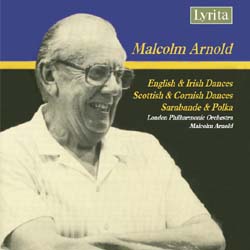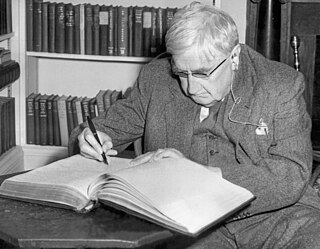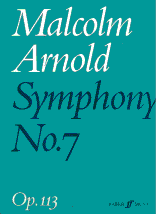Related Research Articles

Edward Elgar's Cello Concerto in E minor, Op. 85, his last notable work, is a cornerstone of the solo cello repertoire. Elgar composed it in the aftermath of the First World War, when his music had already gone out of fashion with the concert-going public. In contrast with Elgar's earlier Violin Concerto, which is lyrical and passionate, the Cello Concerto is for the most part contemplative and elegiac.
A London Symphony is the second symphony composed by Ralph Vaughan Williams. The work is sometimes referred to as Symphony No. 2, though the composer did not designate that name for the work. First performed in 1914, the original score of this four-movement symphony was lost and subsequently reconstructed. Vaughan Williams continued revisions of the work into its final definitive form, which was published in 1936.
Sinfonia antartica is the Italian title given by Ralph Vaughan Williams to his seventh symphony, first performed in 1953. It drew on incidental music the composer had written for the 1948 film Scott of the Antarctic.
The Young Person's Guide to the Orchestra, Op. 34, is a 1945 musical composition by Benjamin Britten with a subtitle Variations and Fugue on a Theme of Purcell. It was based on the second movement, "Rondeau", of the Abdelazer suite. It was originally commissioned for the British educational documentary film called Instruments of the Orchestra released on 29 November 1946, directed by Muir Mathieson and featuring the London Symphony Orchestra conducted by Malcolm Sargent; Sargent also conducted the concert première on 15 October 1946 with the Liverpool Philharmonic in the Philharmonic Hall, Liverpool, England.

English Dances, Op. 27 and 33, are two sets of light music pieces, composed for orchestra by Malcolm Arnold in 1950 and 1951. Each set consists of four dances inspired by, although not based upon, country folk tunes and dances. Each movement is denoted by the tempo marking, as the individual movements are untitled.
Ralph Vaughan Williams's Symphony in E minor, published as Symphony No. 6, was composed in 1944–47, during and immediately after World War II and revised in 1950. Dedicated to Michael Mullinar, it was first performed, in its original version, by Sir Adrian Boult and the BBC Symphony Orchestra on 21 April 1948. Within a year it had received some 100 performances, including the U.S. premiere by the Boston Symphony Orchestra under Serge Koussevitzky on 7 August 1948. Leopold Stokowski gave the first New York performances the following January with the New York Philharmonic and immediately recorded it, declaring that "this is music that will take its place with the greatest creations of the masters." However, Vaughan Williams, very nervous about this symphony, threatened several times to tear up the draft. At the same time, his programme note for the first performance took a defiantly flippant tone.

Ralph Vaughan Williams's Symphony No. 8 in D minor was composed between 1953 and 1955. Sir John Barbirolli, its dedicatee, conducted the Hallé Orchestra in the premiere at the Free Trade Hall in Manchester on 2 May 1956. It is the shortest of the composer's nine symphonies, and is mostly buoyant and optimistic in tone.

The Symphony No. 9 in E minor was the last symphony written by the English composer Ralph Vaughan Williams. He composed it during 1956 and 1957, and it was given its premiere performance in London by the Royal Philharmonic Orchestra conducted by Sir Malcolm Sargent on 2 April 1958, in the composer's eighty-sixth year. The work was received respectfully but, at first, without great enthusiasm. Its reputation has subsequently grown, and the symphony has entered the repertoire, in the concert hall and on record, with the majority of recordings from the 1990s and the 21st century.
The Concerto in F Minor for Bass Tuba and Orchestra by British composer Ralph Vaughan Williams was written in 1954 for Philip Catelinet, principal tubist of the London Symphony Orchestra (LSO), who together gave the premiere on 13 June 1954 with Sir John Barbirolli conducting. The same musicians made the work’s first recording that same year. This concerto was the first concerto written for solo tuba.
The Symphony No. 2 in E minor and C major by Arnold Bax was completed in 1926, after he had worked on it for two years. It was dedicated to Serge Koussevitzky, who conducted the first two performances of the work on 13 and 14 December 1929.
The Symphony No. 6 by Arnold Bax was completed on February 10, 1935. The symphony is dedicated to Sir Adrian Boult. It is, according to David Parlett, "[Bax's] own favourite and widely regarded as his greatest ... powerful and tightly controlled". It was given its world premiere by the Royal Philharmonic on November 21 of the year of composition, 1935.
The Symphony No. 1 by Arnold Bax was completed in 1922 and dedicated to John Ireland. Its outer movements were based on a Piano Sonata in E♭ that Bax subsequently orchestrated, while the central movement was newly composed for the symphony.
The Symphony No. 4 by Arnold Bax was completed in 1930 and dedicated to Paul Corder. It was inspired by Bax's love of the sea and premiered in 1931 by British conductor Basil Cameron and the San Francisco Symphony Orchestra.
The Symphony No. 5 by Arnold Bax was completed in 1932 and dedicated to Jean Sibelius. It is in many ways heavily influenced by Sibelius.
The Symphony No. 7 by Arnold Bax was completed in 1939 and dedicated to "The People of America". The work received its first performance in Carnegie Hall, New York City, by the New York Philharmonic on 10 June 1939 under the baton of Sir Adrian Boult. It was commissioned by the British Council to be played at the 1939 New York World's Fair, along with Arthur Bliss's Piano Concerto in B-flat, and Ralph Vaughan Williams' Five Variants of Dives and Lazarus.

The Symphony No. 7, Op. 113 by Malcolm Arnold was finished in 1973. It is in three movements:

The Symphony No. 8, Op. 124 by Malcolm Arnold was finished in November 1978.
The Symphony in F-sharp, Op. 40, is the only symphony by 20th-century Austrian composer Erich Wolfgang Korngold, although as a teenager in 1912 he had written a Sinfonietta, his Op. 5. Using a theme from the 1939 film The Private Lives of Elizabeth and Essex, the symphony was completed in 1952 and dedicated to the memory of American president Franklin D. Roosevelt, who had died seven years earlier.
The Symphony No. 1 Elevamini is an orchestral work by Australian-born composer Malcolm Williamson.
Russian composer Alfred Schnittke's Symphony No. 8 was composed in 1994. Its dedicatee Gennady Rozhdestvensky conducted the Royal Stockholm Philharmonic Orchestra in the symphony's premiere in Stockholm on 10 November 1994.
References
- ↑ David Ewen (1968). The World of Twentieth-Century Music . Prentice-Hall. p. 48.
- ↑ "Bax: Symphony No. 3 and the Happy Forest on Naxos Reviewed – the Sir Arnold Bax Website".
- ↑ Baxworks